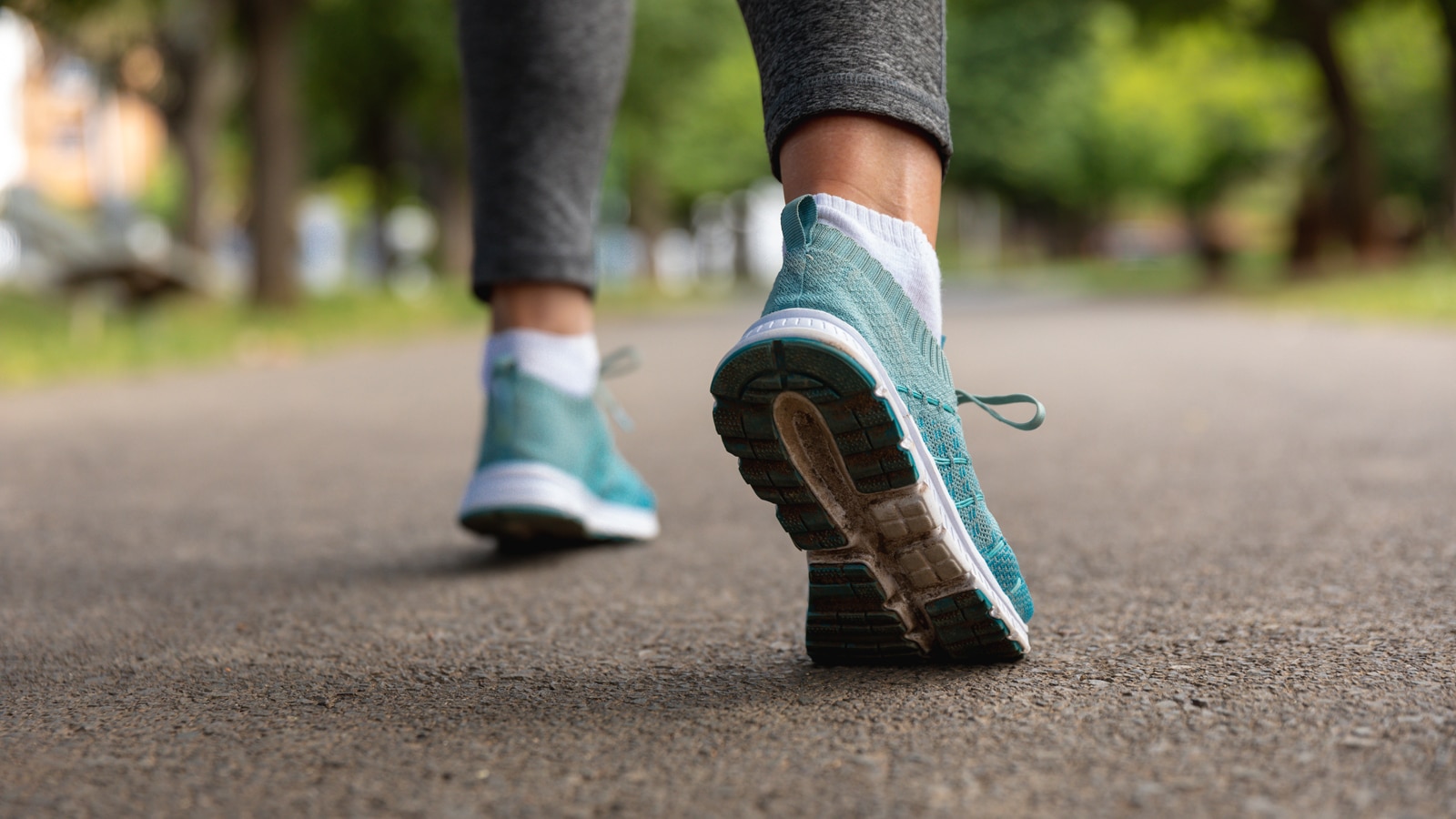How Many Miles Can You Walk In A Day?
Wondering how many miles can you walk in a day? Well, it depends. There’s a big difference between someone who’s just started exercising and a person used to long-distance walking.
Your general fitness level will make a big difference. The reason why you’re walking will make a difference.

How Far Can You Walk On A Hike?
Let’s take my son as an example. He’s a keen mountain biker and he’s been used to exercising all his life. We’ve been dragging him up hills since the age of three.
So when he broke his arm this summer and was banned from the bike until it healed, he jumped at the chance to walk the Via degli Dei in Italy with me.
He doesn’t normally do much walking but we covered up to 20 miles a day without any complaints – just a few blisters and sore feet from walking the last few miles into Florence on hot tarmac.
So when it comes to how far you can walk in a day – it really depends on your background and fitness level.
How Far Can The Average Person Walk In A Day?
Let’s say you’ve signed up for a charity walk and you want to know if you’re capable of completing it! So how far can a healthy person walk?
Naismith’s Rule is a good starting point for planning a long walk.
A fit individual can walk roughly 3 miles (4.8 km) in an hour, with an additional hour for every 2,000 feet (610 m) of altitude gained.
Naismith’s Rule
Based on this rule, a fit and healthy person can walk 24 miles in eight hours of continuous walking along good paths and flat terrain.
That’s an average walking speed of 3 miles per hour. This doesn’t allow for any breaks and for most people it would be a long hard day unless you’ve specifically trained for long distances.
My 21-year-old son has done his share of long walks over the years but even he found a walking distance of 20 miles a day tough, especially with a few hills thrown in.
It’s a good idea to train over shorter distances before taking part in a long-distance walk. For the average person, it will feel a very long way and there’s a risk of getting injured if you walk long distances without training.
Walking For Weight Loss
Walking is perhaps the best form of exercise. It doesn’t need any special equipment, just some comfortable trainers or walking shoes.
It’s a great way to get your heart rate up, improve your cardiovascular health, and hit the 150 minutes per week of moderate-intensity aerobic physical activity recommended by the Centers For Disease Control And Prevention (CDC).
Going for a daily walk can be the best way to improve your mental health – time out from a hectic lifestyle and the recovery your brain needs.
But how much walking does it take to lose weight?
How Many Miles Should You Walk A Day To Lose Weight?
Aim to build up to 5 miles a day of regular walking to lose body weight and hit your weight loss goals.
For most people, walking 5 miles a day straight off the couch will be too much. It’s best to start walking 1-2 miles every day and make it a regular habit.
As your body adjusts to walking more, you can increase the amount of time on your feet.
For best results follow a walking program. You’ll increase your average distance gradually instead of walking too far too soon. No one wants to wake up stiff and sore the next day!
Related post: How To Lose Weight Walking 2 Miles A Day

Average Walking Pace
People naturally walk at a pace of 2.5 miles per hour. If you’re walking for weight loss it needs to be at a brisk walking pace.
That’s at least 3 miles per hour on flat paths. You’ll be able to talk as you walk but you’ll be making a continuous effort.
If you’re fitter, and you find walking fast easy, push yourself. Walk faster. Increase your pace to 3.5 or 4 miles per hour.
How Many Steps In A Mile?
If your fitness tracker counts steps, how many steps should you walk in a day?
10,000 steps a day is a good target and equates to 4 to 5 miles a day. You can add several shorter walks to your daily routine to hit your target number of steps.
Add extra miles to your day whenever you can – walk in your lunch break, walk to work, take the dog out – anything that adds to your walking routine.
Converting from a step count to miles will depend on your stride length but you can make a rough estimate based on your height.
Find out more in this related post: How Many Steps In One Mile Walking Or Running?
Completing A Long Distance Walk As A Beginner
Beginner walkers can complete a 5 to 6-mile walk at an easy pace in two hours. Any further, and it’s better to train for the distance.
If you’ve entered a charity event and run out of time to train, just take it easy. Don’t set off too fast and take breaks to eat and drink.
Most people can walk a lot further than they expect. If it’s a 20-mile charity walk – just expect to be walking a long time. It could take 10 hours!

Experienced Walkers
Experienced trained walkers can go faster and further. In ultra races, a lot of people will be walking but they’ll be walking at a fast pace, often covering 20 miles in just 5 hours.
Many people will enter and walk half marathons and marathons, taking part in the same events as runners. But you can also find events aimed completely at walkers such as the annual US Freedom Walk or the UK MoonWalk events.
If you’re planning a long backpacking trip, 15 miles a day is a good guide. Carrying a pack will slow you down – the more weight you carry, the longer those miles will feel!
When we walked the Via degli Dei, my son and I were fastpacking – traveling with small packs and a superlight tent. We didn’t carry any food apart from a few snacks. But those lightweight packs still felt quite heavy at the end of a long day!
The fitter you get, of course, the further you can walk, but the terrain you’re walking through will make a big difference to your walking speed. Steep climbs and rough trails can make covering just two miles an hour seem fast!
The Furthest Walking Distance In A Day
In 1976, Jesse Castaneda set the world record for the furthest distance walked in 24 hours. Jesse walked 142 miles 440 yds (228.930km) at Albuquerque, New Mexico. That’s an incredible average of 6.3 miles per hour.
Training To Walk Longer Distances
To walk longer distances, it’s important to build up slowly. If you’re aiming to walk a half marathon or marathon race include at least one long walk per week plus 3 to 4 shorter walks in your training plan.
Start your first long walk at a comfortable distance and every week walk one to two miles further.
For your shorter walks try and vary your pace – adding in walking intervals and some hill walking.
Strength training such as bodyweight exercises will improve your core and leg strength to help you walk further – especially uphills!

Tips For Long Walks
These tips will help you prepare for a long walk:
Beware of blisters
Blisters can be the curse of walkers. Make sure you break in any new walking shoes and wear comfortable socks.
Carry first-aid supplies such as blister plasters and tape to prevent blisters from forming. And be prepared to stop and treat any hot spots or painful blisters before they become a problem!
Hydrate well
Make sure you drink enough water, especially on hot days. It’s best to drink a glass of water about one hour before starting your walk – and take a few extra sips before setting off.
Take water with you and drink to thirst – most people will take a few zips every 20 to 30 minutes but it depends on how hard you’re walking, how hot it is, and your fitness level.
At the end of your walk make sure you rehydrate – water is best.
Take Some Food
For longer walks, you need to plan your food intake. Don’t start your walk on an empty stomach – have a snack or light meal about an hour before.
If you’re walking for longer than 60 to 90 minutes, Take some high-energy snacks with you such as nuts, dried fruit, or energy bars.
Dress Appropriately
Check the weather forecast before setting off and dress accordingly. It’s important to protect yourself from the sun in hot weather and dress in layers so you can add or remove them depending on the temperature.
Use A Backpack Or Waistbelt
Hand-held water bottles can tire out your arms and make you walk lopsided. It’s better to stash your water and any food you’re carrying in a backpack or waistbelt (fanny pack). Find one that fits well and won’t move about as you walk.
Stay Safe
I’d love to think it’s always okay for people to walk on their own. Sadly, we always need to think about safety. Find safe places to walk and if it’s dark try and walk with a friend.
Tell someone where you’re going and when you’ll be back. Take a phone with you. If it’s dark take a head torch and if you’re walking near roads wear reflective clothing.

Walking is a fantastic way to get fit, explore the world and clear your mind. I hope these tips help you walk even further!
Related post: Walking or Running: Which Is Better For Weight Loss?





